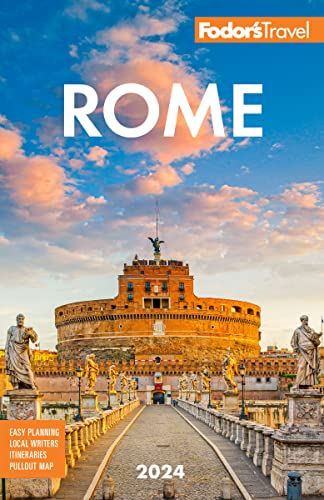In spirit, and in fact, this area of Rome is grandiose. The overblown Vittoriano monument, the labyrinthine treasure-chest palaces of Rome's surviving aristocracy—even the diamond-draped denizens of Via Condotti—all embody the exuberant ego of a city at the center of its own universe. Here's where you'll see ladies in fur as you walk through a thousand snapshots while climbing the famous Spanish Steps.
At the top of everyone's sightseeing list is that great Baroque confection, the Trevi Fountain. Since pickpockets favor this tourist-heavy spot, be particularly aware as you withdraw that wallet. Once you've chucked your change in the fountain, follow the crowds and get ready to take some serious time to explore this neighborhood.
If Rome has a Main Street, it's Via del Corso, which is often jammed with swarms of Roman teenagers, in from the city's outlying districts for a ritual stroll that resembles a strutting migration of lemmings in blue jeans. Along this thoroughfare it's easy to forget that the gray and stolid atmosphere comes partially from the enormous palaces lining both sides of the street. Many were built over the past 300 years by princely families who wanted to secure front-row seats for the frantic antics of Carnevale, which once sent horses racing down the street from Piazza del Popolo to Piazza Venezia. But once you make it past their chaste entrances, you'll discover some of Rome's grandest 17th- and 18th-century treasures, including golden Baroque ballrooms, glittering churches, and great Old Master paintings.
Via del Corso begins at noisy, chaotic Piazza Venezia, the imperial-size hub of all this ostentation, presided over by Il Vittoriano, also known as the Altare della Patria (Altar of the Nation)—or, less piously, "the typewriter," "the wedding cake," or "the Eighth Hill of Rome." Sitting grandly off the avenue are the Palazzo Doria Pamphilj and the Palazzo Colonna, two of the city's great art collections housed in magnificent family palaces.
Extending just east of Via del Corso, but miles away in style, Piazza di Spagna and its surrounding streets are where Rome's elite congregate for shopping sprees and gallery hopping. The piazza's main draw remains the 18th-century Spanish Steps, which connect the ritzy shops at the bottom of the hill with the ritzy hotels (and one lovely church) at the top. The reward for climbing the scalinata is a dizzying view of central Rome. Because the steps face west, the views are especially good around sunset.






